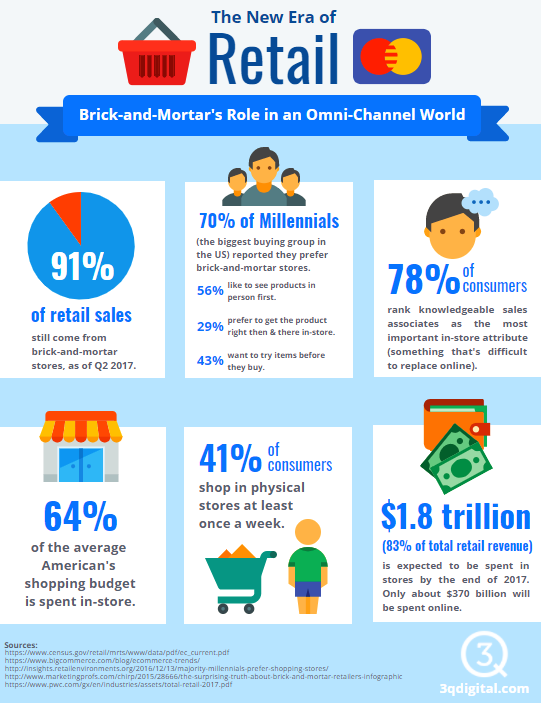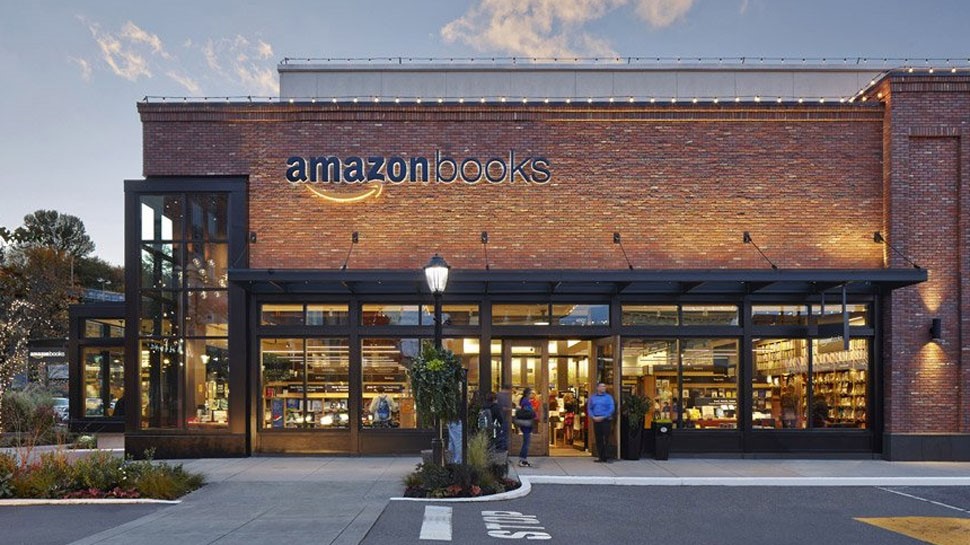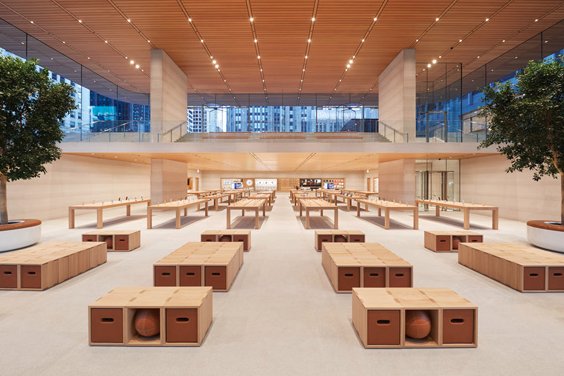In an age of one-click buying and promo code apps, many retailers grumble about “showrooming” and “webrooming.” Once-thriving stores are now places where customers are “just looking” only to score the best deal online later. But is this entirely true?

With iconic chains such as Toys R Us going bankrupt, and many shopping malls emptying out, the phrase “retail apocalypse” often gets tossed around. However, brick and mortar still reigns supreme. It’s just that the retail landscape is shifting, and retailers needs to adjust their strategies accordingly to connect clicks to bricks.
Let’s look at the facts:

- 91% of retail sales still come from brick-and-mortar stores, as of Q2 2017 (Census Bureau)
- 70% of Millennials – now the biggest buying group in the US – reported that they prefer brick-and-mortar stores (CRBE)
- 56% like to see the products in person first (CRBE)
- 29% prefer to get the product right then and there in the store (CRBE)
- 43% want to try on items before buying (CRBE)
- 64% of the average American’s shopping budget is spent in-store (BigCommerce)
- 78% of consumers rank knowledgeable sales associates as the most important in-store attribute – something that’s difficult to replicate online (PWC)
- 41% of consumers still shop in physical stores at least once a week (BigCommerce)
- $1.8 trillion (83% of total retail revenue) is expected to be spent in stores in 2017 – as opposed to $370 billion online (MarketingProfs)
Also, let’s not leave out the obvious: Amazon is opening physical locations left and right. From book stores to pick-up locations, along with acquiring Whole Foods and partnering with Kohl’s, it seems that our future overlord, Jeff Bezos, is on to something.

image source: Amazon
It turns out that back in 2012, Bezos had applied for an anti-showrooming patent called “Physical Store Online Shopping Control”, which essentially uses the store’s Wi-Fi network to intercept search queries with price comparison-related terms. Amazon is also able to leverage this technology for real -ime price matching, special offers, sales support, and more. (TechCrunch) This strategy puts Amazon in a highly competitive position for their physical stores, and they are well on their way to becoming a true omni-channel retailer.
On the flip side, Amazon’s primary competitor, Walmart, has somehow become even larger than ever, and that’s because they have also embraced an omni-channel strategy. While Walmart’s brick-and-mortar stores have been around for over 50 years (so they already had a leg up on brand awareness), their online presence began in 2000, and their “Site to Store” shipping option launched in 2007.
For the past decade, Walmart has fully embraced an omni-channel strategy, allowing customers to purchase online and pick up and/or make returns online or in-store. In fact, this past October, Walmart even declared that they aim for online returns to take just 35 seconds, thanks in part to their new Mobile Express Returns program. By making the in-store return process super easy and convenient for online shoppers, they’ve got you in the store, and now you’ll buy those three cases of La Croix you didn’t know you needed. (They were on sale!)
What’s more, if you didn’t already know, Walmart purchased the ecommerce company Jet.com back in August 2016. Although Walmart already offers free 2-day shipping on many items, their reported strategy is for Jet to focus on the “millennial urban dweller” and use the site as a testing ground for new innovations with an audience that is more receptive to change. (Source: Business Insider)
Even more, Apple, which has already been well-known for their interactive store formats, took their in-store brand experience a step further this past fall. In October, Apple opened their Apple Michigan Avenue location in Chicago, which includes a large space that is intended to help serve the community. In the building’s large lecture space, Apple hosted “The Chicago Series,” which included several educational programs covering topics ranging from photography to startup businesses.

In a public statement, Apple’s SVP of Retail, Angela Ahrendts, said about the store, “Apple Michigan Avenue exemplifies our new vision where everyone is welcome to experience all of our incredible products, services and inspiring educational programs in the heart of their city.”
Apple Michigan Avenue is said to be the first in the “new generation” of Apple retail stores, as the company continues to shift the in-store focus to the full brand experience, which creates more loyal, lifetime customers.
So, there you have it. Brick-and-mortar stores (in general) are here to stay! But don’t let out that huge sigh of relief just yet. Physical stores are more important than ever, but as you can see, the narrative around them is changing rapidly. Keep following this series (part 2 is on connecting online/offline activity) for more advice on how to adapt to the shifting retail landscape and properly measure your results.





